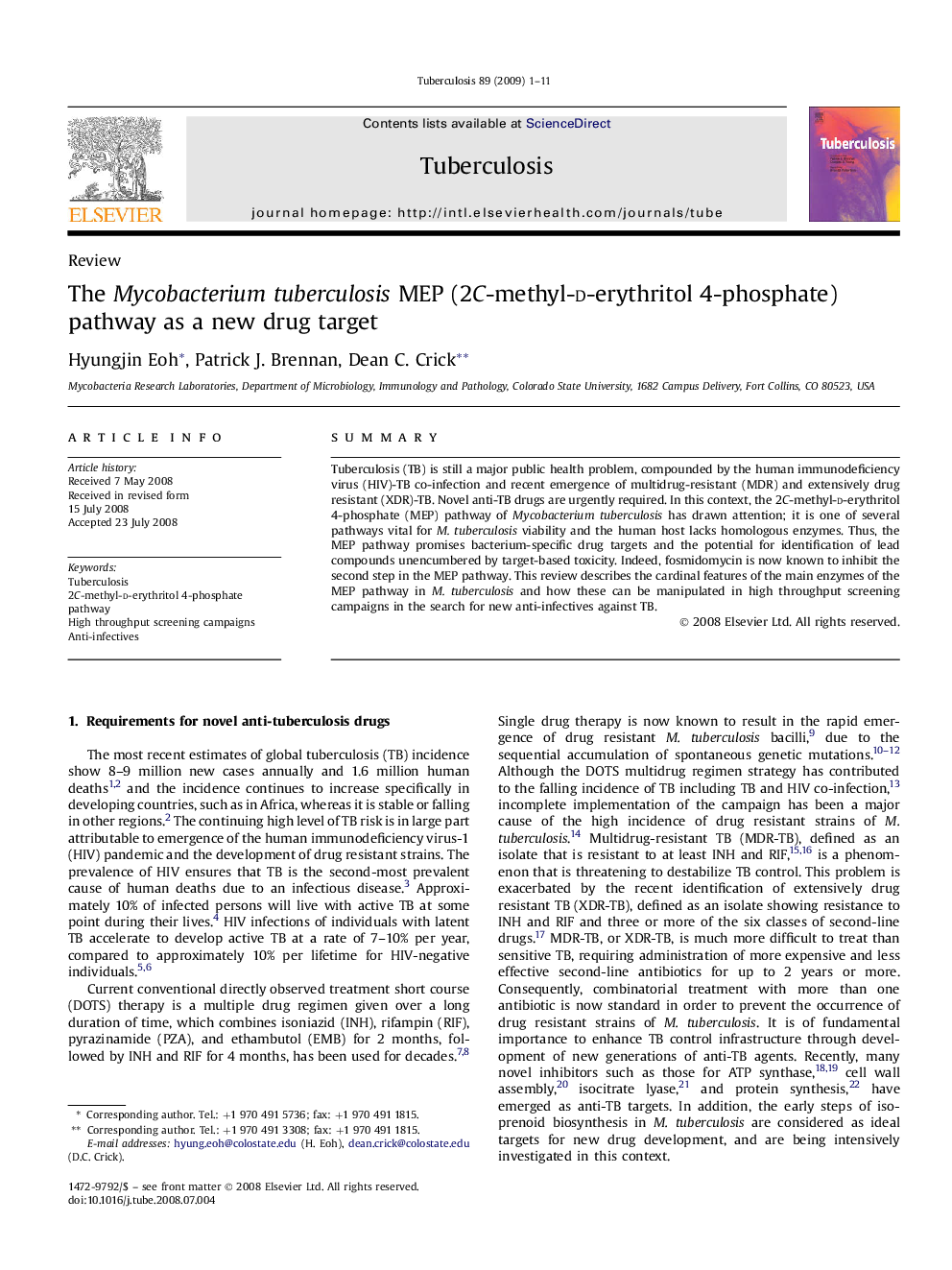| Article ID | Journal | Published Year | Pages | File Type |
|---|---|---|---|---|
| 2401726 | Tuberculosis | 2009 | 11 Pages |
SummaryTuberculosis (TB) is still a major public health problem, compounded by the human immunodeficiency virus (HIV)-TB co-infection and recent emergence of multidrug-resistant (MDR) and extensively drug resistant (XDR)-TB. Novel anti-TB drugs are urgently required. In this context, the 2C-methyl-d-erythritol 4-phosphate (MEP) pathway of Mycobacterium tuberculosis has drawn attention; it is one of several pathways vital for M. tuberculosis viability and the human host lacks homologous enzymes. Thus, the MEP pathway promises bacterium-specific drug targets and the potential for identification of lead compounds unencumbered by target-based toxicity. Indeed, fosmidomycin is now known to inhibit the second step in the MEP pathway. This review describes the cardinal features of the main enzymes of the MEP pathway in M. tuberculosis and how these can be manipulated in high throughput screening campaigns in the search for new anti-infectives against TB.
